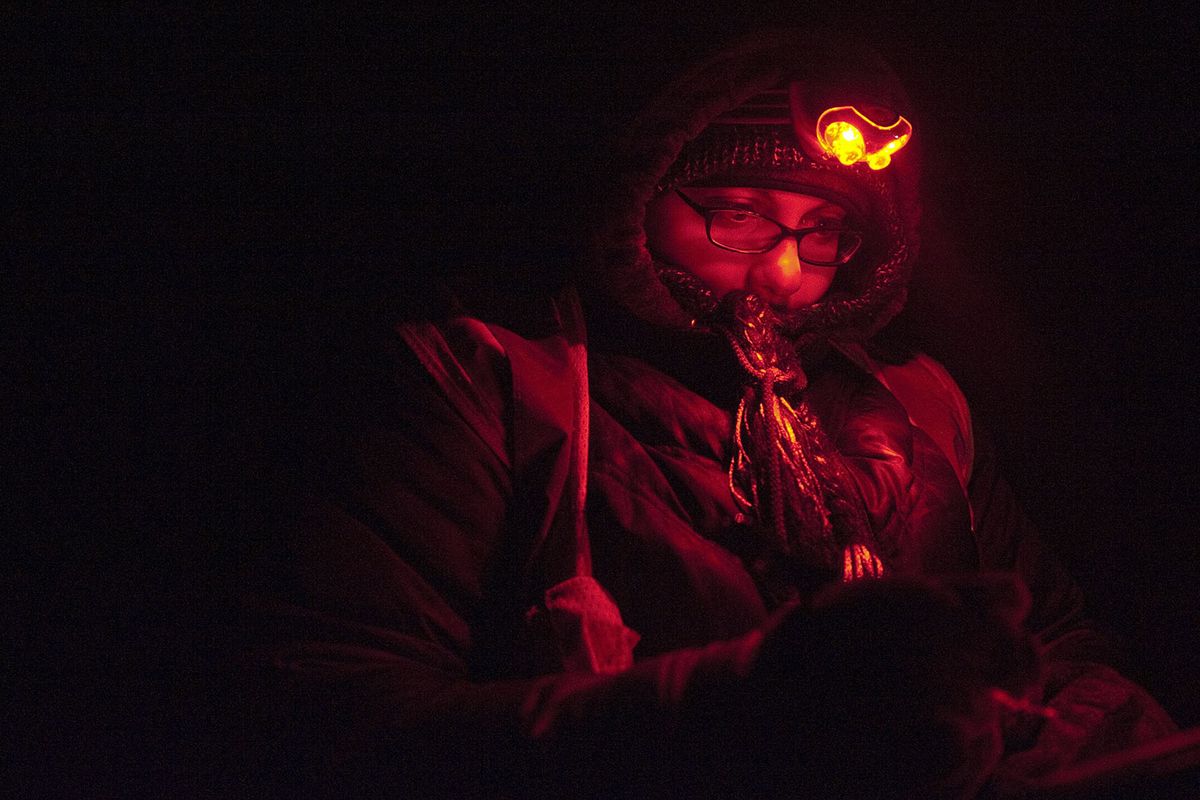Students studying barn owl fatalities along I-84 in Idaho

EDEN, Idaho – When Tempe Regan saw a wing flapping in the breeze on the side of the road, she knew right away what it was.
She turned her truck around and pulled over on the north side of Idaho Highway 25 a few miles east of Eden.
The bird’s head hung lifeless as she scooped it from the asphalt. A bone jutted from a wing.
“It’s still warm,” Regan said.
She had found what she was looking for Friday night, but not how she’d hoped to find it. The moment solidified her passion for her research and would later bring her to tears.
Regan is a Boise State University graduate student studying the frequency of barn owl fatalities along the Interstate 84 corridor between Boise and Burley. Her research is a part of a collaborative effort supported by the Idaho Transportation Department, Idaho Department of Fish and Game and the Federal Highway Administration.
The aim of the research is straightforward: learn what can be done to reduce the number of barn owl fatalities along the corridor – a number that could be as high as 1,500 per year between Boise and Pocatello.
Regan’s research, however, is surreal.
On Friday, Regan and Sara Pourzamani, a BSU biology student assisting in the field, stopped on a desert road somewhere between Eden and Hazelton.
The pair climbed out into the frigid black night, pulled reflective vests over several layers of clothes and placed cones in the road.
Aided by a headlamp, Pourzamani took notes on light pollution; number and distance of houses; presence of power lines; wind speed and air temperature.
Then Regan called out the time and turned on an electronic game call. They flicked their spotlights on, beaming the sagebrush, looking and listening for owls.
Five minutes later, the call belted out 30 seconds of 105-decibel barn owl broadcast calls as Regan held it over her head.
When the shrieking stopped, she measured background noise with a handheld decibel meter, and the pair continued to spotlight in silence.
“This is what I do, all night long,” Regan said softly.
They repeated the process – five minutes of silence, 30 seconds of calls – for about 16 minutes before they packed up and moved on.
Regan’s research area is a series of 300 sites plotted randomly with a Global Information System from zero to about 10 1/2 miles north and south of the interstate.
Regan said her goal is to reach at least 12 detection sites each night, which usually entails driving more than 100 miles in eight or nine hours.
With a minimum number of barn owl sightings and some tricky statistics, she’ll be able to estimate the population, she said.
At a second site Friday no barn owls were detected, but a pair of great horned owls – male and female – hooted in the distance. Regan produced a compass and read Pourzamani a bearing, which would be used later to determine the birds’ position in relation to the interstate.
Great horned owls are not the focus of the research, but they are part of the equation.
“Great horned owls eat barn owls,” Regan whispered.
Jim Belthoff, a biology professor at BSU who advises Regan, said people speculate that background noise created by the interstate may play a role in the fatalities, as barn owls often locate prey completely by sound. The birds have evolved to hunt over expansive lightless terrain, so headlights could also factor in.
But one of the main contributing factors is the way they hunt, he said, “low and slow on the wing,” a couple of meters off the ground.
Barn owls are listed as threatened in seven states; in 14 others, they’re listed as a species of interest or concern. Idaho has no listing.
“We do know that the owls are dying by the hundreds,” Belthoff said, but there aren’t any good scientific estimates of their populations along the corridor.
The question is whether the population can sustain the loss.
Before heading back to Boise, she confessed – teary-eyed – how she felt journaling about finding the dead bird.
“My research became a matter of the heart,” she said. “I’ll do whatever it takes to solve this problem, even if it means spending every night of every weekend for the next two years out here looking for owls.”